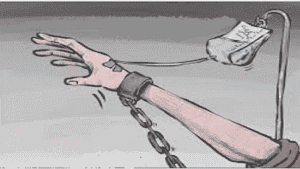by Jason Tarnow | May 12, 2020 | Crime, Criminal Attorney, Legal Aid, Legal Rights, Media, Riots, Social Media
On March 18, 2020, the BC court system responded to the coronavirus pandemic swiftly and without hesitation, reducing operations by the likes of which criminal counsel simply hasn’t seen before. Once it was confirmed how rapidly COVID19 spreads, the crowded confines of publicly accessed courtrooms were immediately deemed inappropriate – dangerous even. Since courtrooms often yield a congregation of some of society’s most vulnerable people, it made perfect sense to act defensively. These decisions, and many others effecting the justice system, were made only one week after the World Health Organization declared a global pandemic on March 11, 2020.
Unfortunately, there was a noticeable absence of urgency when it came time to protect the vulnerable inmate population overcrowded and totally confined within the walls of Mission Institution.
“In the worst-case scenario, CSC will need to order more body bags and find cold storage to stack up the bodies of those whose lives will be lost that could have been saved” – Justin Piche, criminologist, Criminalization and Punishment Project at the University of Ottawa
On March 31, 2020, federal Public Safety Minister Bill Blair recommended that the Correctional Service of Canada (“CSC”) immediately consider the release of non-violent inmates to mitigate the unavoidable reality that the virus could, and would, devastate the wellbeing of prison populations. His recommendation came on the heels of the CSC announcing the first two positive COVID-19 cases in federal institutions in Quebec.

On April 4, 2020, the CSC announced 4 confirmed cases at Mission Institution, leading to a lockdown of the facility.
By April 8, 2020, there were 11 confirmed cases, all inmates. Nearly one month had passed since the WHO declared a global pandemic.
By April 18, 60 inmates and 10 staff tested positive, and the CSC marked its first coronavirus related inmate death, exactly one month after the courts effectively shut down.
By April 25, 2020, 106 inmates and 12 correctional officers were confirmed to be infected, representing the largest outbreak in the Canadian Correctional System. On this date, the CSC advised that all inmates at Mission Medium Institution had been tested, but in any event, new cases were continuing to be discovered.
While disturbing, none of these developments are surprising. The largest incidence of outbreaks has been at long-term care homes – combining close quarters, limited mobility, and care-workers employed at more than one facility is a recipe for disaster when it comes to COVID-19, a pathogen that spreads and infects without discrimination. The same vulnerabilities exist within the correctional system, where they are intensified. Inmates and corrections staff are simply unable to practice crucial social distancing. Personal protective equipment for inmates has not been prioritized as it has in other sectors, despite these individuals being at a much higher risk of getting sick.

The CSC responded to COVID-19 by prohibiting visits to inmates, temporary absences, work releases, and inmate transfers between correctional facilities. While these steps likely helped to curb the spread of the virus, as a whole, they are grossly inadequate. Without a vaccine, social distancing remains our greatest defence against the virus. For the inmates at Mission Institution and those incarcerated at facilities across Canada, proper protective equipment is hard to come by, but hope is even harder.
by Jason Tarnow | May 5, 2020 | Crime, Legal Rights, Media, Police, Social Media, Wheels Of Justice
On April 18 and 19 2020, Gabriel Wortman was solely responsible for the largest mass shooting in Canadian history, which claimed the lives of 22 innocent people including veteran RCMP Cst. Heidi Stevenson. Wortman, a 51 year old denturist, went on a rampage in Portapique, Nova Scotia using firearms that police suspect were obtained illegally, likely from the United States. Eventually he was cornered at a gas station and died in a shootout with police.
Just shy of two weeks later, Prime Minister Justin Trudeau announced a ban on approximately 1,500 different models of military grade assault-style weapons. The announcement came as a surprise to no one – back in 2015, the Liberal government campaigned on promises to address gun violence. In addition to banning assault-style weapons, the Liberal government vowed to implement a buy-back program for prohibited firearms, establish red-flag legislation, impose tighter restrictions for proper storage of firearms and licensing, and to grant municipalities the power to ban handguns.
Trudeau’s announcement has sparked outrage among gun owners and enthusiasts, although overall most Canadians are in favour of stricter regulations regarding firearm ownership.

It’s important to understand what the ban actually applies to. It prohibits the sale, transport, import and use of semi-automatic weapons – Ruger Mini-14, M14 semi-automatic, Beretta CX4 Storm, and CSA-VZ-58 to name a few. Fully automatic weapons are already banned in Canada. Semi-automatic firearms were previously classified as either restricted or non-restricted, and will now be classified as prohibited.
So what do you do if you already have these in your possession? That depends.
Due to their classification as prohibited weapons, effected firearms will essentially become useless. In any event, gun owners will not be forced to relinquish them – but they will be provided with an incentive to do so. Though unclear at this point, the Canadian Government will be implementing a “buy back” program for all applicable firearms – aka, you’ll be paid to turn them over. For gun owners wishing to retain their firearms, there will be an option to be “grandfathered” into ownership. Certain terms and restrictions will apply, and will likely turn these weapons into collector’s items.
Unlike in the United States, our Charter does not include a constitutional right to bear arms

For those who choose to do nothing and simply retain their weapons, the consequences could be severe. Being found in possession of a prohibited firearm comes with the potential of spending years behind bars and a criminal record that could negatively impact employment and traveling prospects for life. The Canadian Government has instituted an amnesty period (waiting period) to allow for gun owners to consider their options. In any event, all gun owners must be in compliance, one way or another, by April 2022.
Though there is definitely a tight-knit community of lawful and responsible gun owners in Canada, the point of the ban is to limit access of tactical weapons among Canadians. Unlike in the United States, our Charter does not include a constitutional right to bear arms – so you can be sure that tighter regulations are on the horizon.
by Jason Tarnow | Apr 21, 2020 | Crime, Criminal Attorney, Legal Aid, Legal Rights, Media, Politics, Uncategorized, Wheels Of Justice
It has been over one month since the Courts of British Columbia significantly curtailed operations in an attempt to combat COVID-19.

For many of those who work in the legal field, it was this development that made it all real. It quickly became clear that the novel coronavirus had the potential to spread quickly, and the confined space of a courtroom serves as ideal grounds for transmission.
Despite the coronavirus acting as a proverbial wrench in the gears of justice, the judicial system continues to putter along. This is largely due to increased utilization of technological tools like video/conferencing for court appearances and swearing of affidavits, and relaxing restrictions when it comes to fax/electronic filing of court documents.
Video conferencing isn’t new to the BC court system. As early as 2002, Judges across the province agreed that the technology improved procedural efficiency by facilitating witness testimony from distant locations and allowing interim appearances by video involving counsel from other jurisdictions. Judges also noted the value of video- conferencing for inmates at correctional centres – defeating the purpose of transferring multiple inmates from various correctional centres to various courthouses. The bottom line is that modernizing certain aspects of the criminal justice system makes sense financially and systemically – and events like COVID-19 demonstrate how it can have occupational benefits too.
At present, there is enormous value in modernizing certain judicial processes for two reasons – one, to limit face-to-face interactions between judicial staff, defence counsel and an Accused person, and two, to mitigate the consequences of what can only be described as colossal delay.
In reducing operations, the majority of criminal trials scheduled between March 18, 2020 and June 1, 2020, have been adjourned generally to dates in June and July, 2020. Cases that are deemed to be of an urgent nature will be able to proceed, although in a procedural sense, things will look different – for example, witnesses who would ordinarily appear before the Court to give evidence may be authorized to testify via video. For the most part, however, trials will proceed at a date that is likely much later than originally anticipated.

The situation is more grim for accused persons in custody awaiting their trial. Inmates are, of course, among the most vulnerable to contracting the novl coronavirus – a concern that was a topic of discussion before the courts closed – but didn’t really become part of the actual narrative until it was too late Trials for accused persons in custody have also been adjourned (for trials scheduled between March 23 and May 16, 2020). Sentencing hearings and bail hearings for accused persons will proceed. This could be positive – for some, it might result in their immediate release from the correctional system. For others, further incarceration for as little as an additional 90 days in custody will be devastating, a potential death sentence.
It is far too early to gauge how overwhelmed the court system will be at the return to business as usual – but when you consider that there was a huge backlog before COVID-19 shut it all down, it seems only reasonable that extreme measures – such as implementing night/weekend court, and permanently authorizing certain modernization measures – will need to be taken to truly return to normal.






